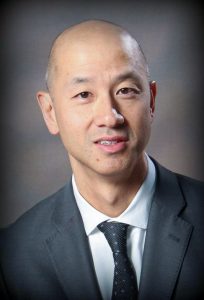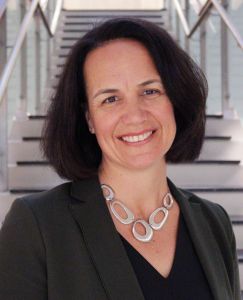Perhaps no sector of Canadian society has been more ripe, or eager, for paradigm-busting transformation through tech-based innovation than the hospital and medical community.
And at no other time has the need for that transformation been more acute.
As COVID-19 shuts down cities, threatens to overwhelm hospitals and – grimly – claims lives, the urgency to reinvent on the fly, to squeeze more horsepower and capability out of medical infrastructure that was already bursting, has never been more pressing.
Today Communitech launches a special four-part series called Code Now, a comprehensive look at how Waterloo Region tech innovators can help the local medical community, both long- and short-term.
The series has two aims:
First, and most important, it will surface the most urgent needs of Waterloo Region’s hospitals and medical staff as they grapple with COVID-19. The objective is to give the local tech community – a hive of people skilled like no other in the art of moving fast and delivering on the fly – a window on shortages, gaps, and pain points of local doctors, administrators and other medical personnel, to hear what they need in order to provide care more quickly.
In short, we’ll hear how local entrepreneurs, design thinkers and companies large and small can help right now.
There have already been celebrated local examples of just that. Serial entrepreneur Dave Caputo’s Trusscore pivoted to making wall panels that allow hospitals to protect patients while better utilizing space. InkSmith pivoted to churning out The Canadian Shield – face shields for front-line medical staff in harm’s way. Guelph appliance maker Danby is working on ventilators. And a recent drive for protective equipment yielded a bounty of donated material.
But with the infection numbers continuing to rise, more ideas and solutions are needed.
“We’re really seeking the bright ideas, intellect and talent of [the tech] community, to help us problem-solve, innovate, come up with solutions that might help us improve our response to these challenges,” says Young Lee, Grand River Hospital’s Vice-President of Quality, Performance and Clinical Systems Transformation.

Young Lee,
Vice-President of Quality, Performance and
Clinical Systems Transformation,
Grand River Hospital.
(Photo: Grand River Hospital)
“And I’ll frame that consciously in terms of select, targeted challenges and opportunities. The biggest thing is that it’s in a focused manner, and more importantly things that are practical and implementable, ideas in response to our key priorities and pressing needs.”
In other words, the medical system’s Bat Signal is flashing in the sky. Superhero entrepreneurs, please apply. Quickly.
Second, the series will delve into the need for an ongoing, robust relationship between entrepreneurs and the local medical community, and the nascent plans under way to deliver just that. A relationship that will help the medical system adopt the agile mindset of the tech ecosystem.
Lee acknowledges that “we’re a long way from where we need to be.”
Dialogue and relationships, he says, are the key to making change happen.
“The more we spend time and engage in these kinds of [discussions], the more we mutually learn about each other in our respective worlds and culture and mindset,” Lee says. “On a basis of mutual empathy and understanding, learn how we work more effectively together as opposed to bringing to the table the frustration that exists, which I acknowledge is real and, I think, legitimate in many cases, to be perfectly frank.”
Lee is working, along with other stakeholders, to form a “think tank” along the lines of a robust peer-to-peer group that puts front-line medical staff, administrators and entrepreneurs in the same room to come up with solutions. Its first meeting is scheduled for April 21.
“I think what it could look like, hopefully, is an ongoing partnership whereby we have some regular interval or cadence, where we have dialogue, and such that you, the med-tech community, continues to engage with us and understand our evolving needs and priorities over time.”
In effect, Lee is talking about standing up an innovation lab, similar in many respects to those that already exist in the region, a place where “we creatively think through and design development and prototyping processes.
“We agree that this is the problem. We bring the right players to the table, we think through design, figure out the prototype and then we act on it.”

Lee Fairclough,
President of St. Mary’s Hospital.
(Photo: St. Mary’s Hospital)
Lee knows the Canadian medical establishment is ripe for culture change; locally, the seeds of change were planted before the current crisis unfolded, with new leaders arriving on scene: Ron Gagnon took over as CEO at Grand River in 2018, and Lee Fairclough as President of St. Mary’s in January of this year. Both are eager to leverage the expertise of the local tech ecosystem.
“I think what I’m keen to do is make sure that we can bring cultures – medicine and technology – together,” Fairclough says. “And I would say that being in the throes of this COVID-19 era has really brought to light the benefit of doing that. What will happen is the culture [within medicine] will shift because we’re able to expose people to other ways of thinking.”
The current crisis has placed a premium on speed – for better, faster, stronger solutions. Perhaps no Canadian jurisdiction is better placed to deliver fast, tech-based innovation than Waterloo Region and the Toronto-Waterloo Corridor, with its high density of startups and a mindset of “get sh!t done.”
The current crisis has already served as an innovation crucible, forcing processes to be quickened, approvals to be granted quickly, and new ideas to be tried.
“We’ve [already] put a lot of solutions into play,” says Paul Hosek, a critical care physician at Grand River Hospital. “We’ve made gigantic strides. “We’ve literally renovated our physical spaces to accommodate more patients. And we’ve almost tripled our ventilator capacity, provided we have the ventilators to match those spaces.”
But more has to happen. And it has to happen quickly. The gauntlet has been thrown down to the local tech community, a need for help. Who will seize it?
Tomorrow, in Part II of Code Now:
Hospital administrators, including doctors and a nurse in supervisory roles, identify their urgent needs – and how tech can help – as COVID-19 cases multiply.

